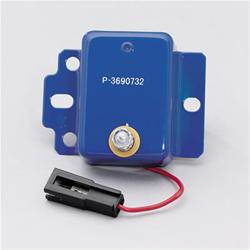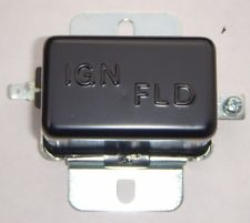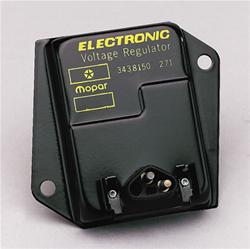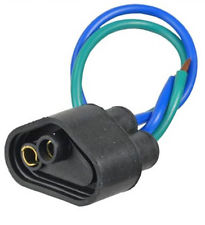Oldtimer
Well-Known Member
Following initial road tests of my 68 GTX 440, my dash mounted full sweep AutoMeter Volt Gauge is indicating 14.5 Volts (Constant Output),
from what I believe is an aftermarket 'Race Only' regulator, which according to Summit's advertising, is only supposed to generate a maximum
of 13.5 Volts of (Constant Output).
I am thinking this regulator should be swapped out for something a little cooler on my electrical system, and perhaps saving my battery
from being fried.... I am not running any high demand, or outrageous electronics...., so, I should be good to go with a stock regulator.
This is the regulator currently installed:

I am considering, the below repo stock job:

OR would the following, be a better and more stable choice?


Here is a comment I read today, posted earlier by a customer on the Summit Racing website, who bought this regulator.
Together with all the kind suggestions of nms9theham, this regulator looks like a good choice, if a replacement is needed
and you are not concerned about having an 'original' charging system - on rides preceding this technology.
Quote: "I looked for product information about the internal electronics but didn't come up with much until I researched some forums.
This is the best voltage regulator to use for street use in your Mopar muscle car, hands down. It uses modern electronics and looks great on the firewall.
I installed it in my pro street '70 cuda with a high output alternator and it works awesome. After starting the engine, at idle it holds 12.8 VDC and once
you go off idle it builds from 13.5 VDC to 14.2 VDC, then stabilizes at 13.8VDC after a while. Perfect for my use."
What do you think?
from what I believe is an aftermarket 'Race Only' regulator, which according to Summit's advertising, is only supposed to generate a maximum
of 13.5 Volts of (Constant Output).
I am thinking this regulator should be swapped out for something a little cooler on my electrical system, and perhaps saving my battery
from being fried.... I am not running any high demand, or outrageous electronics...., so, I should be good to go with a stock regulator.
This is the regulator currently installed:

I am considering, the below repo stock job:

OR would the following, be a better and more stable choice?


Here is a comment I read today, posted earlier by a customer on the Summit Racing website, who bought this regulator.
Together with all the kind suggestions of nms9theham, this regulator looks like a good choice, if a replacement is needed
and you are not concerned about having an 'original' charging system - on rides preceding this technology.
Quote: "I looked for product information about the internal electronics but didn't come up with much until I researched some forums.
This is the best voltage regulator to use for street use in your Mopar muscle car, hands down. It uses modern electronics and looks great on the firewall.
I installed it in my pro street '70 cuda with a high output alternator and it works awesome. After starting the engine, at idle it holds 12.8 VDC and once
you go off idle it builds from 13.5 VDC to 14.2 VDC, then stabilizes at 13.8VDC after a while. Perfect for my use."
What do you think?
Last edited:















